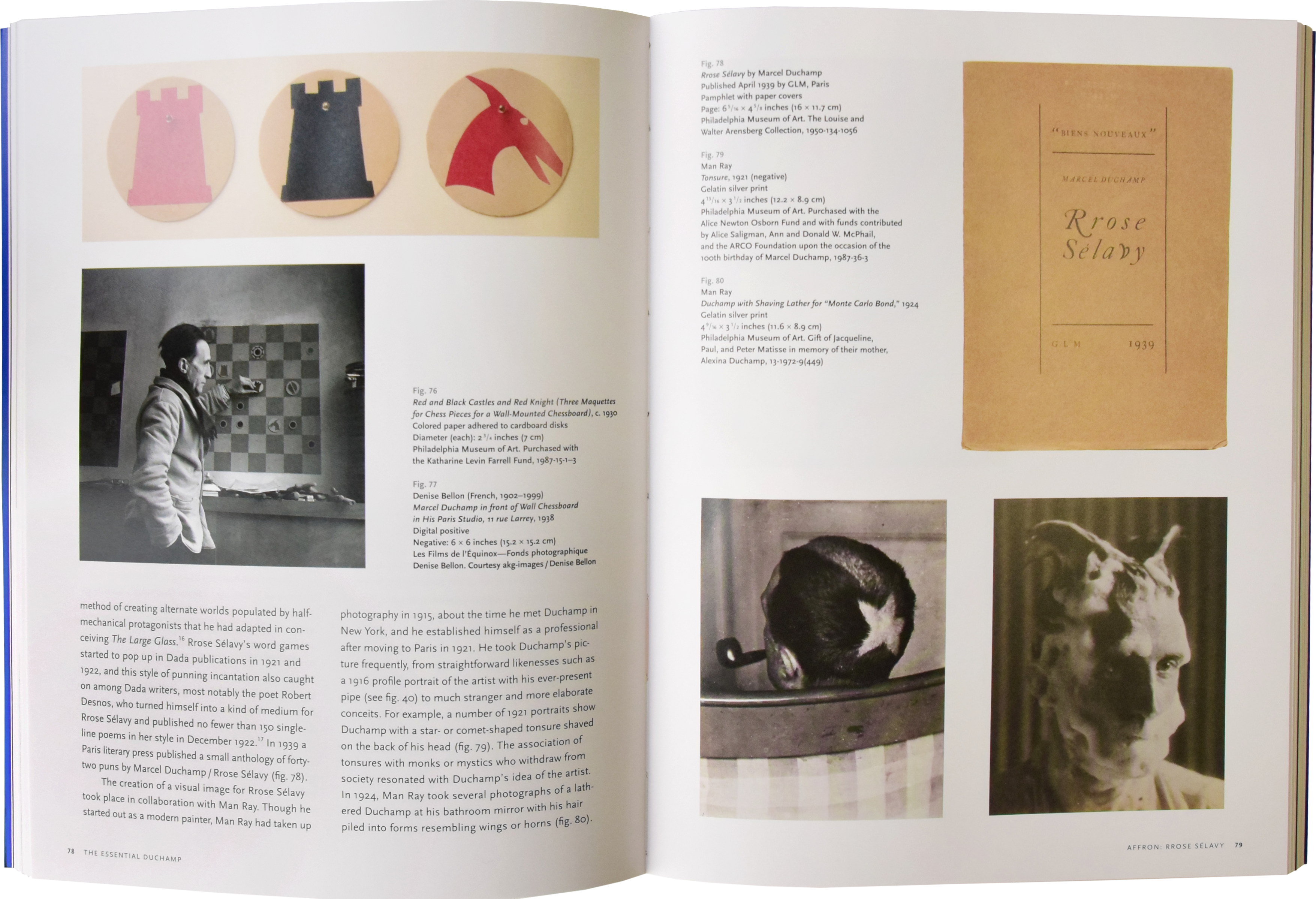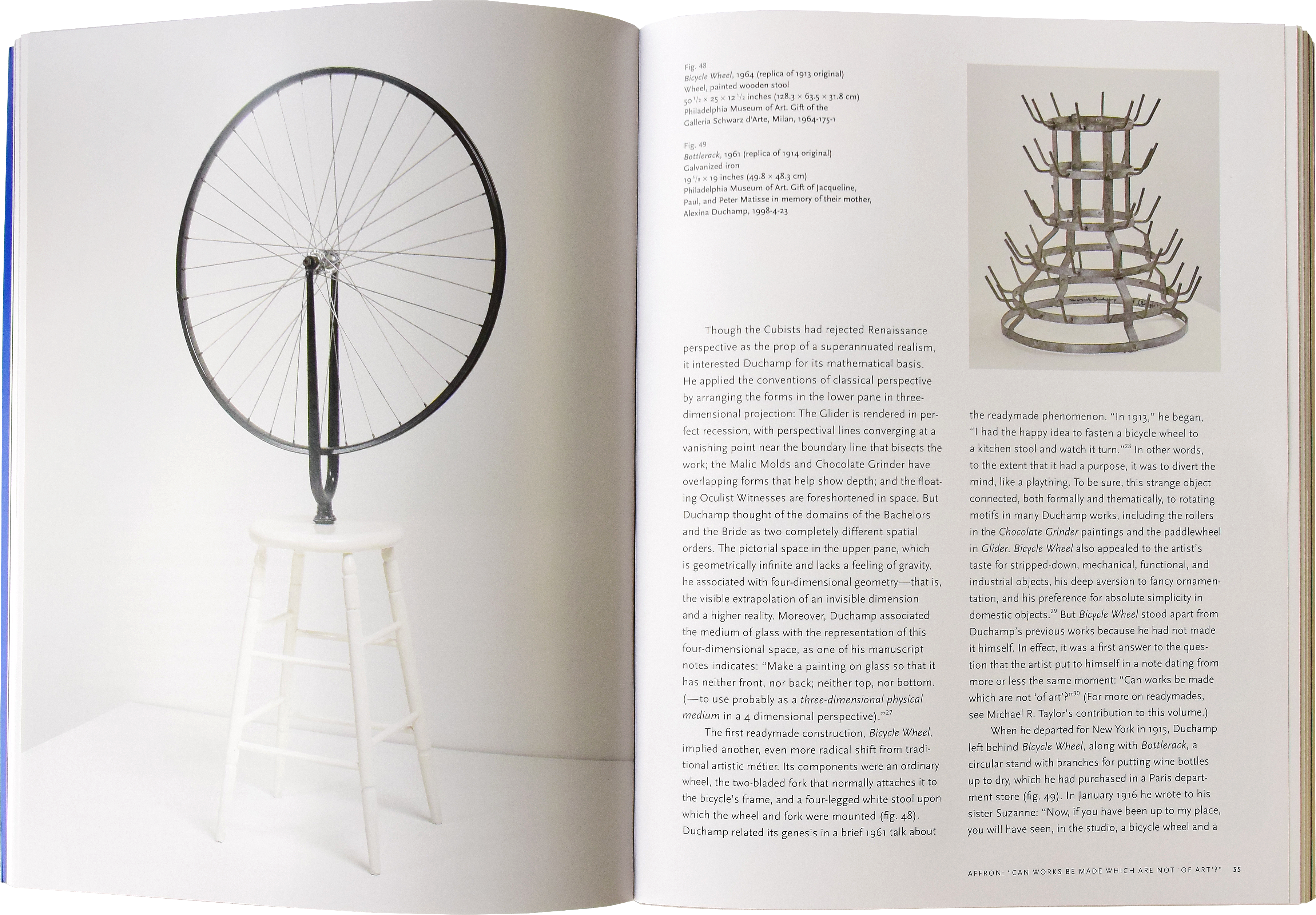THE ESSENTIAL: DUCHAMP






발행처
국립현대미술관
발행연도
2018
페이지수
19x25cm /189 Page
발행
국립현대미술관
가격
30,000 원
색상
Color
유형
Paper back
내용
CONTENTS
FOREWORD
Timothy Rub
vi
INTRODUCTION: DUCHAMP'S LEGACY
Matthew affron
1
THE ESSENTIAL DUCHAMP
Matthew affron
A PAINTER'S LIFE 7
"CAN WORKS BE MADE WHICH ARE NOT 'OF ART'?" 35
RROSE SELAVY 71
OUR LADY OF DESIRE 109
KEY TERMS
READYMADE
MIchael R. Taylor 142
PRECISION OPTICS
Alexander kauffman 147
PICTORIAL NOMINALISM
John Vick 151
INFRATHIN
Cecile Debray 155
INTERVIEWS AND TALKS
STATEMENT
compiled by James Johnson Sweeney (1946) 160
INTERVIEW
with James Johnson Sweeney(1955) 163
THE CREATIVE ART(1957) 169
APROPOS OF "READYMADES" (1961) 171
NOTES 173
SELECTED BIBLIOGRAPHY 182
INDEX OF NAMES AND WORKS 186
ACKNOWLEDGEMENTS 189
INTRODUCTION: DUCHAMP'S LEGACY
Matthew Affron
Marcel Duchamp(1887-1968) began building his own legend when he was still a young man. He started to make his name in 1911-12 as a member of the Cubist group in Paris. The succes de scandale of one of his extraordinary Cubist pictures, Nude Descending a Staircase (No.2) (see fig. 20), at the 1913 Armory Show in New York turned him into a quasi-celebrity in the United States. But Duchamp had already lost interest in living the life of a painter, even a famous one, and in 1915 he left Paris to reinvent himself in new York, where he joined a brilliant coterie of artists, writers, and intellectuals that gathered at the apartment of the collectors Louise and Walter Arensberg(see figs. 36-38) and at Alfred Stieglitz's Little Galleries of the Photo-Secession, known as 291.











